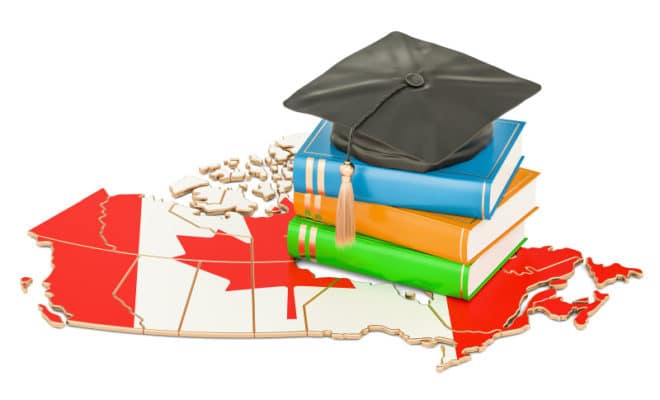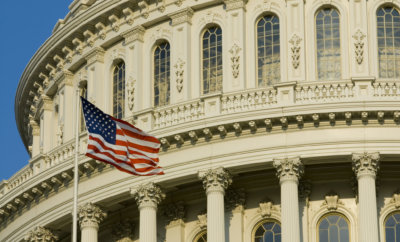Education
Chalo Canada

Many Canadian universities are now witnessing an unprecedented surge in international students.
Nearly a decade ago, when Delhi based Shalu Sharma, then a fresh college graduate, was applying to universities abroad, her parents dissuaded her from choosing Canada. Sharma’s counselor had recommended Canada as an upcoming higher education destination. But when she began considering universities in Toronto and Alberta, her parents and relatives couldn’t wrap their head around why anybody would choose cold and sparsely populated Canada over more “reputed” study destination in the United States and the United Kingdom.
Sharma says, “A decade ago, studying abroad was seen as much as an academic excellence issue, as an opportunity to flaunt where your kids are studying. UK, USA and Australia were the top destinations. Canada, despite its excellent economy and education system, still was not really seen as that ‘it’ place to go study. I gave in to peer pressure and ended up choosing Cardiff in UK instead.”
With the 10th largest economy in the world, Canada boasts one of the world’s highest per capita incomes. It is also among the highest-ranking countries in the Human Development Index, besides being one of the world’s most ethnically diverse and multicultural nations. Notwithstanding the fact that it is a major immigration destination, it has been overshadowed by its towering neighbor, the United States of America.

Meera Patel: “I chose Canada for more practical reasons.”
In 2006, when Meera Patel, a Delhi resident chose University of Ottawa for her masters’ in law, she admits she was one of the few who didn’t opt for the USA, UK or Australia: “I chose Canada for more practical reasons. Universities abroad follow a rating system and the more reputed ones are difficult to get into. Back then Canadian universities did not follow a rating system and still provided the same infrastructure and level of education. Also, the fee structure in Canada was cheaper than in U.S. But despite these advantages my friends who were going abroad to study chose UK or U.S. instead.”
Patel admits that what worked in Canada’s favor was also that she had relatives there.
However, with the changing socio-political atmosphere around the world and especially in the United States, a large number of Canadian universities are witnessing an unprecedented surge in international students. As a corollary, many American universities are experiencing sharp declines.
Many academicians have expressed concern that the new U.S. administration is damaging their international student recruitment efforts. A survey of 250 American colleges and universities by the American Association of Collegiate Registrars and Admission Officers reported that 39 percent experienced a decline in international applications. The highest number of declines was reported from the Middle East. The institutions also reported that applications from India and China have also declined. 26 percent of institutions reported undergraduate application declines and 32 percent reported graduate application declines from India.
Amongst the common concerns shared by international students and their families, according to the report: a perception that the climate in the U.S. was now less welcoming for individuals from other countries and that benefits and restrictions around visas could impact employment opportunities.
By contrast, Canada was viewed as positively supportive of immigrants and as a great study destination. Rohit Agnihotri, faculty instructor at the Manitoba Institute of Trades and Technology (MITT), Winnipeg, Manitoba, admits that there has been a tremendous increase not just this year, but in recent years, in students from India and across the world coming to Canada to study. He says: “My initial reasons to come to Canada were personal. I had family here, so my wife and I chose to come here too. But over the years, we have realized that Canada really respects diversity and we are never made to feel like outsiders.
THE TRUMP EFFECT?
Call it the Trump effect. Canada has become the new hotbed of higher education for students across the world, with unprecedented interest among students from India, the Middle East and Mexico.
Sankul Rawat, a graduate student at the University of Illinois at Chicago, told the Associated Press that many of his peers in India are opting for Canada over the U.S. because of the current political climate: “Right now students are thinking about how these immigration policies are going to change. Everyone is skeptical (about the) travel ban (or) if there is any kind of ban.”
Leigh Ellen Keating, director of international services at Brock University, Ontario told Inside Higher Ed that at a recruitment fair she attended in Mexico earlier this year: “The table was flooded with people, which is not historically what I have seen. They just want to go to Canada and historically, I think a lot of them would go to States.”
A change in Canada’s immigration system has contributed to Canada’s appeal as a study option. Under the Canada Express Entry program, students with Canadian education receive additional points, advantaging them in securing permanent residence.
This fall, many Canadian universities saw an increase of 25 percent or more in the number of international students. While Canada has always been among the top-10 study destinations, the number of foreign students has doubled during the past decade. The number of study permits issued has grown from 128,411 to 2008 to 267,780 in 2016. The numbers really exploded during the past year. According to Canada Immigration News, there were 414,000 active study permits at the end of 2016.
The University of Waterloo in Ontario reported a 41 percent increase in graduate international applications and a 25 percent increase in undergraduate applications. At the University of Toronto, the number of American students accepting admissions more than doubled for the 2017 session from 2016. At the University of Alberta, graduate program applications from international students grew a whopping 82 percent, with Iranians and Indians leading the pack. Applications from Iran grew 196 percent, while those from India 152 percent. There was also a 60 percent increase in graduate program applicants from America. Concordia University in Montreal likewise saw a 325 percent increase in student applications. Mexico registered a 325 percent growth, Iran 317 percent and India 233 percent.
David Turpin, president of the University of Alberta told the Globe and Mail earlier this year: “We have a rising tide of isolationism and exclusion in Europe, in the United States and people are looking to Canada.”

Gaurav Batra: “Earlier it was mostly students from Tier 2 cities who wanted to go abroad to study. Now more and more students from metros are going abroad too.”
Gaurav Batra, an education consultant in India who runs Infinite Opportunities, says: “We send about 1,000 students from India every year to study abroad and even till today the most popular places remain U.S., UK, Australia, New Zealand and now Canada.”
Batra sees a new trend forming in India: “Earlier it was mostly students from Tier 2 cities who wanted to go abroad to study. Now more and more students from metros are going abroad too.”
Why is Canada in the spotlight now? Batra says: “Government policies of a certain place predominantly decide if there will be an influx of students there. For instance, till a few years ago, UK was a popular choice because students used to get a post study visa for 2 years. Today Canada is extending ease of visa and recruitment, so obviously it is turning out to be a popular choice.”
He adds, “Let’s not forget that Canada currently has four prominent Punjabis in political parties and that also helps shift the focus for Indians.”
THE INDIAN INTEREST
Adarsh Khandelwal, an education counselor based in Delhi says: “Indians are also realizing that Canada has low cost of living than say UK or USA. Besides this, postgraduate programs, such as MBA, which is popular amongst Indians, is more affordable in Canada than in other countries.”
He points out that the tuition and residence fee for an MBA in Canada is nearly $60,000, which is at least $20,000 lower than in the United States.
Also in the not-so-welcoming political atmosphere in the United States, Canada’s pro-immigrant stance holds popular appeal for international students.
According to a new global study, The Value of Education: Higher and Higher, commissioned by HSBC earlier this year, Canada ranked as the fourth most preferred destination for study abroad. The HSBC study, which surveyed 8,400 parents across 15 countries, also revealed that students in Canada are more likely to fund their own education goals (42 percent v a global average of 15 percent). In a list compiled by analysts at QS Quacquarelli Symonds, Montreal ranked as the top ranked city for international students, Paris, London and Seoul. Vancouver and Toronto ranked 10th and 11th.
Canadian universities are expanding their outreach toward international students. The University of British Columbia plans to spend $127 million on a language college to improve the language skills of international students. Many other universities are expanding their international recruitment programs.
Yet others are waiving application fees for students affected by Trump’s travel ban.
The political maelstrom over the H1B visa program for professionals in the United States is also turning off international students, who view Canada’s offer of Post Graduate Work Permit for international students after their studies more favorably. The permit allows them to work for any employer for up to three years.
Manpreet Khurana, who joined Cambrian College this fall, says she opted for Canada, because, “Apart from the social atmosphere shaping around the world, the fact that the Canadian government supports students by issuing work permit to students at the airport itself, made me really think of coming to Canada.”




You must be logged in to post a comment Login